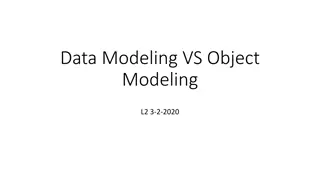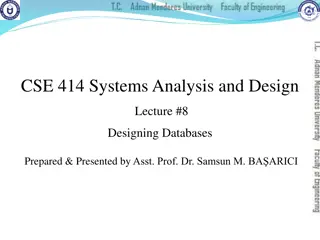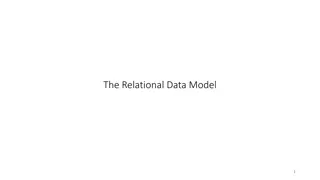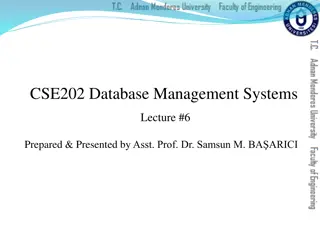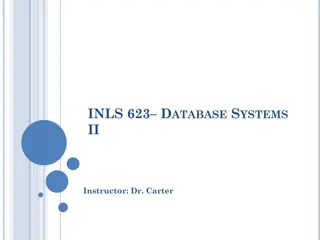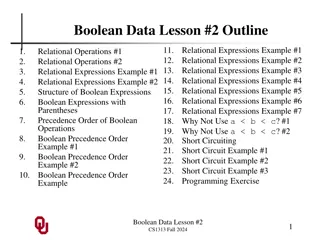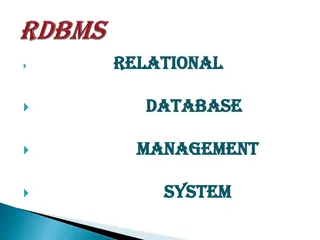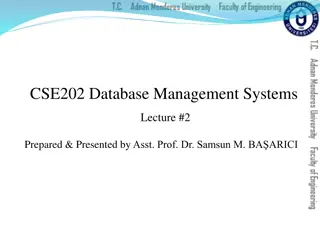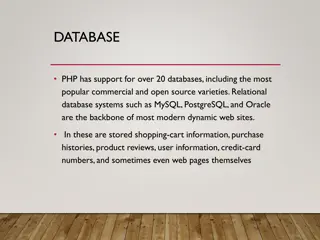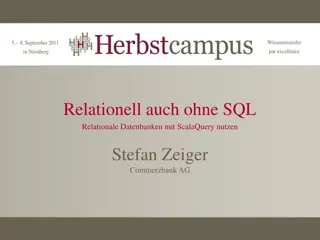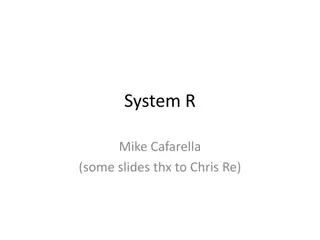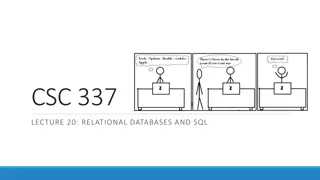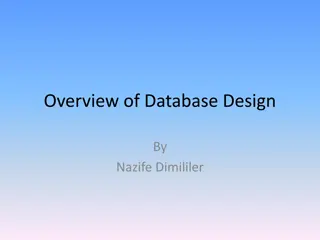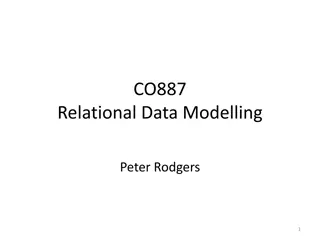Comparison of Commercial Object-Relational Database Systems
In this study, the comparison between commercial Object-Relational Database Management Systems (ORDBMS) is explored, highlighting the advantages and differences in performance and user-friendliness. It delves into the composition of ORDBMS, the concept of User-Defined Data Types, Inheritance, and User-Defined Routines in systems like Informix and PostgresSQL. The overview provides insights into the unique features of each system, aiming to aid in better understanding their functionalities and applications.
Uploaded on Apr 30, 2025 | 0 Views
Download Presentation

Please find below an Image/Link to download the presentation.
The content on the website is provided AS IS for your information and personal use only. It may not be sold, licensed, or shared on other websites without obtaining consent from the author.If you encounter any issues during the download, it is possible that the publisher has removed the file from their server.
You are allowed to download the files provided on this website for personal or commercial use, subject to the condition that they are used lawfully. All files are the property of their respective owners.
The content on the website is provided AS IS for your information and personal use only. It may not be sold, licensed, or shared on other websites without obtaining consent from the author.
E N D
Presentation Transcript
P16 Comparison on commercial Object Relational Database Systems Dong Haoxuan A0085279N Xu Xianan Zhu Jiarui Zhu Wuzhong A0084556W A0091892U A0080946X
Introduction ORDBMS: Composition of both relational database and Object-Oriented Database RDBMS perform better OODBMS is user friendly to developers ORDBMS is a middle ground of both
*http://en.wikipedia.org/wiki/Comparison_of_object-relational_database_management_systems*http://en.wikipedia.org/wiki/Comparison_of_object-relational_database_management_systems
Informix User-Defined Data Types UDTs can be either opaque or distinct. A distinct type has the same internal structure as an existing data type An opaque type stores a single value and cannot be divided into components by the database server
Informix Inheritance CREATE TABLE Employees ( Name PersonName NOT NULL, DOB DATE NOT NULL, Salary Currency NOT NULL, Address StreetAddress NOT NULL PRIMARY KEY ( Name, DOB ) ); CREATE TABLE Temporary_Employees ( Resume DOCUMENT NOT NULL, LivesAt GEOPOINT NOT NULL, Booked SET( Period NOT NULL ) ) UNDER Employees; http://infolab.usc.edu/csci585/Spring2010/den_ar/ordb.pdf
Informix User-Defined Routines A user-defined routine (UDR) is a routine that you can define and that can be invoked within an SQL statement or within another UDR.
PostgresSQL User-Defined Data Types 4 kinds of user-defined types : base types, composite type, domains and pseudo-types.
PostgresSQL Base type
PostgresSQL Composite type
PostgresSQL Domain and Pseudo Types Domains are special base types with constraints. Pseudo-Types are similar to Object class in java. It is abstract and is declared when a function correspond to non-specific data types.
PostgresSQL User-Defined Funtions 4 kinds of user-defined functions: Query language functions; Procedural language functions; internal functions and C-language functions
PostgresSQL Query language functions
PostgresSQL Composite type
PostgresSQL Internal Functions and Procedural language functions Internal functions server inbuilt C-language functions Procedural language functions are functions in other languages.
PostgresSQL Inheritance Table inheritance
Oracle Oracle Objects and Types
Oracle Oracle Methods member methods, static methods, constructor methods, external implemented methods Oracle Object Tables
Oracle Oracle Type Inheritance Supertype and Subtype Overriding, overloading and polymorphism Oracle Collection varrays and nested tables


